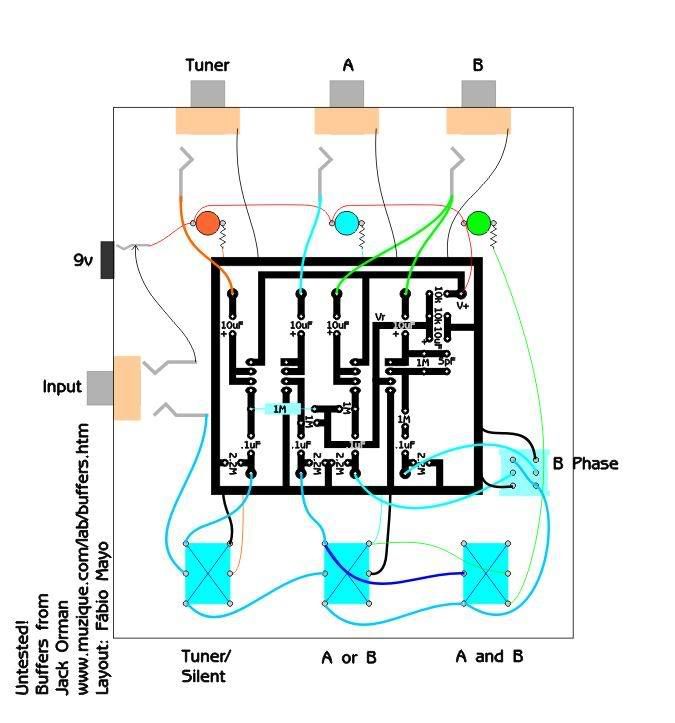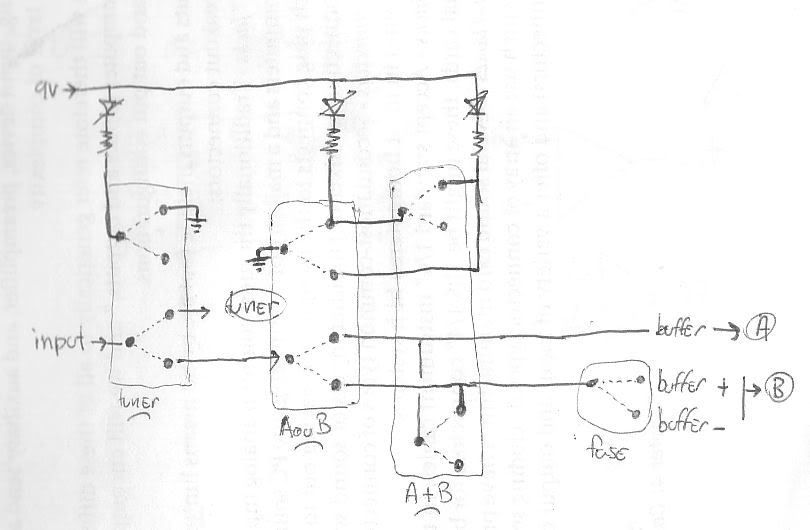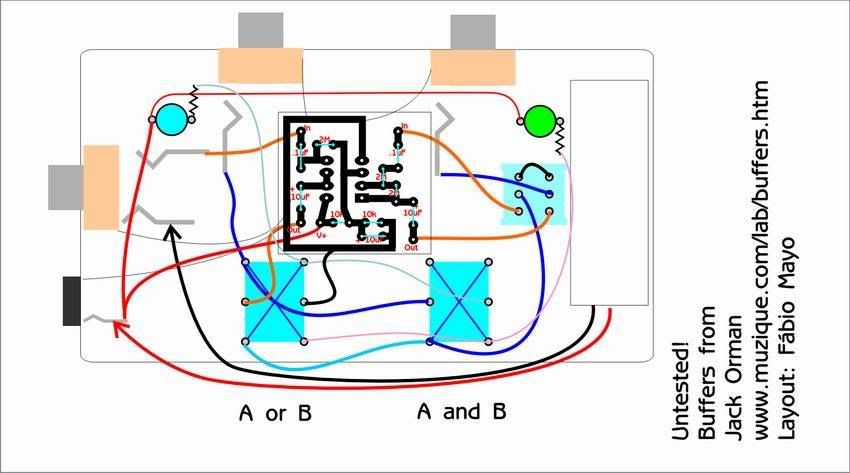Hi, everyone.
I've been meaning to build me an amp switch. Here's what I've made so far,
can you please take a look? The PCB worries me, especially the Vr trace that
goes around a lot of the traces. Traces are bold (2 mm).
Below is a drawing. The box turned out to be 13 x 15 cm (5.12 x 5.9 inches)
which is just a little bigger than Barber pedals. The first switch selects
between a buffer tuner out (silent) or the amplifiers outputs. Then there's the
usual ABY switching scheme: A or B on one switch, both A+B on the other.
The B output has a phase switch to choose between a inverting or a non
inverting buffer. Buffer circuits come dircetly from AMZ website.
http://www.muzique.com/lab/buffers.htm

Here's the logic scheme:

Will it work?
Thank you.
I've been meaning to build me an amp switch. Here's what I've made so far,
can you please take a look? The PCB worries me, especially the Vr trace that
goes around a lot of the traces. Traces are bold (2 mm).
Below is a drawing. The box turned out to be 13 x 15 cm (5.12 x 5.9 inches)
which is just a little bigger than Barber pedals. The first switch selects
between a buffer tuner out (silent) or the amplifiers outputs. Then there's the
usual ABY switching scheme: A or B on one switch, both A+B on the other.
The B output has a phase switch to choose between a inverting or a non
inverting buffer. Buffer circuits come dircetly from AMZ website.
http://www.muzique.com/lab/buffers.htm

Here's the logic scheme:

Will it work?
Thank you.
 but I have a few questions if you don't mind:
but I have a few questions if you don't mind: . Then I figured all on one board at the end of the pedalboard (which will not be good for tuning if the effects are on).
. Then I figured all on one board at the end of the pedalboard (which will not be good for tuning if the effects are on). 
Comment